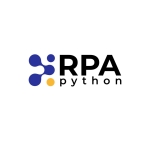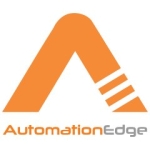What is our primary use case?
Our use cases are account receivables and account payable. In insurance, our use cases are for vetting beneficiaries, upgrading client portfolios, and updating customer's policies.
What is most valuable?
The entire tool is valuable because it is an enterprise tool. It is on par with other tools like Automation Anywhere or UiPath with the OCR/ICR facilities, analytics, and the entire package for enterprise-level security. It has the highest level of security as compared to any other tool.
What needs improvement?
There are a lot of things coming up, such as Discovery Bot and Process Discovery. A lot of other aspects are also maturing. We have definitely started using it for our clients, and it is maturing as a solution, but it is all about how you integrate the enterprise with all the automation projects, such as your chatbot, Conversational AI, and robotics. How they are integrated and talk to each other creates a very good business case with all three aspects. The next level should be about integrating it with other automation tools as well. It can have integration with other tools or automation projects, such as your chatbot, Conversational AI, and robotics.
For how long have I used the solution?
I am in robotics for the last seven to eight years, and I have been using Blue Prism for about three to four years.
What do I think about the stability of the solution?
Stability-wise, it is a good tool.
What do I think about the scalability of the solution?
It is definitely scalable. The whole market of RPA is definitely scalable, but it again depends on your feasibility and complexity when you study a particular environment and process. It also depends on whether you want to scale in the whole organization or different departments or you want to scale up into different areas. All RPA solutions are on par in terms of scalability. There is no difference between them.
How are customer service and technical support?
I don't have any direct experience with them. My solution architect used to handle that. I haven't seen many technical issues because if you are going to deploy the solution and if you've studied enough about the organization and the architecture, then something major is not going to come up. Anything minor, such as securities, passwords, or anything else, can be easily managed.
It is completely run by the solution architects, which is the support team from the RPA side. All technical issues definitely involve the IT team, which is your internal architecture support team and the application support team. You need the support team from the architecture and the IT perspective to manage the technical follow-ups.
Which solution did I use previously and why did I switch?
I have also used UiPath and Automation Anywhere. All these three solutions stand out because they are at the enterprise level. As compared to UiPath and Automation Anywhere, to use Blue Prism, you need developers who have hardcore development experience. It requires quite a bit on the development side. In Blue Prism, you can also code separately and write a script, which adds more value to it.
Blue Prism came too late into the market with its analytics and process discovery features, whereas Automation Anywhere and UiPath were the first ones in the market. Blue Prism is catching up, and it is in the Gartner quadrant, Forrester, etc. It is not lagging far behind.
In Europe, Blue Prism has captured a lot of markets. In the US and Asia, you will see Automation Anywhere and UiPath in the front race. Microsoft, WorkFusion, and Pega are also catching up now.
How was the initial setup?
It is not that complex. It is about how you study an organization and how an organization's architecture runs through. If it is a big organization or an enterprise, then you have to have solution architects from the customer side and also from our side. Solution architects will go and study the customer's architecture. Based on that, we can select which tools are going to be used and how complex it is going to be. It is very much dependent on how the architecture of an organization is because you are going to place the automation tool into that particular organization. Therefore, the initial feasibility and study play a major role in defining the complexity of your design and the entire format or automation.
Initially, the deployment used to take quite long. Now, it is not client-based; it is web-based, and the installation process has been reduced. You just download, and there is no starting a client and all that kind of stuff. It is much easier now than it was before.
What about the implementation team?
In terms of the staff required for the deployment and maintenance of Blue Prism, it depends on what kind of process you're managing. It is not about the tools; it is about the processes. You need to know:
- How complex they are?
- What is the risk factor for these processes?
- How do they impact the entire automation in terms of cost? That is a very important aspect of support because it is in production, and it is going to have a straight impact on the client's revenue.
Generally, one person can easily support around five processes if they fall into the simple category. If the processes fall into the complex category, then you need at least two people managing five processes. By complex, I mean when you have applications that are lengthy and the number of steps of the process are more than 500 or so, and you have to monitor the bots very closely. When the bot or the process breaks, the support team needs to take over and act accordingly.
The roles and responsibilities and the kind of people needed for maintaining the solution vary based on whether you have agile project management or a lot of projects going on. Typically, you will need a solution architect. You would require an analyst only in the first two or three months or whatever is the period for taking care of the process you want to deploy. After that, you don't require the analysts because it only needs to be overseen from the business side, which will begin with SMEs and the production support team.
Any changes or optimization after 90 days, six months, or a year, due to multiple factors such as legislation changes or anything else, have to be done in the process that is robotized. At this stage, the SMEs and the support team play a very vital role. There should definitely be a very good support function because a lot of follow-ups happen in the process and the production in robotics. To manage them, there should be a very good ticketing system in place. The Agile methodology works perfectly fine, and it adds great value to run your process effectively and having an efficient process, but you definitely need the solution architect, application owner, project management team, and the COE team to manage the entire workflow, work items, or backlog items coming into the support function.
What's my experience with pricing, setup cost, and licensing?
It is a bit higher in cost as compared to Automation Anywhere and UiPath. The rate also differs from client to client. Margins are also important when it comes to costing and licensing. There are some additional costs involved besides the standard licensing costs. You have the development team cost, which includes the project manager, development team, analyst, and testers. You also need a team manager. You also have the tools cost, architecture cost, platform cost, and the licensing cost of each bot.
What other advice do I have?
You should suggest a tool only after you study the architecture of an enterprise. Every tool has its own features, upside, and downside. It is not about necessarily going for Blue Prism, Automation Anywhere, or UiPath. For implementing a solution, you definitely need to look in the market to find out what suits you. You can then go for it.
Blue Prism, Automation Anywhere, or UiPath are on par. There is not much difference in those tools at an enterprise level. The early development cost and the cost of the platform differ in these three tools. There are some clients who say that "We want only Blue Prism. We don't want to look at anything else." In such a scenario, you can definitely go for Blue Prism because it is on par with other competitors.
The biggest lesson that we have learned from using Blue Prism is that it is important to choose the right processes and the right complexity of the processes. You can't choose highly complex processes where you have around 800,000 steps or very volatile processes where the team is involved in the application layer or at the process level very frequently. These kinds of things could be avoided.
I would rate Blue Prism an eight out of ten because it is a very old tool. It has been around in the market for quite a while, and they have their own learnings. It is a complete package at an enterprise level, where you can have analytics and attended and unattended automation. You can run your scripts, and at an enterprise level, even security aspects are very strong as compared to what is generally required by a client. There is room for improvement. All the new features that are coming up are not being used by many clients, and a lot of learning has to happen.
Which deployment model are you using for this solution?
On-premises
Disclosure: My company has a business relationship with this vendor other than being a customer. Partner


















